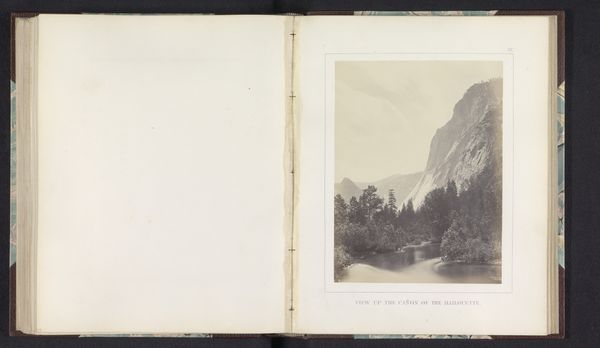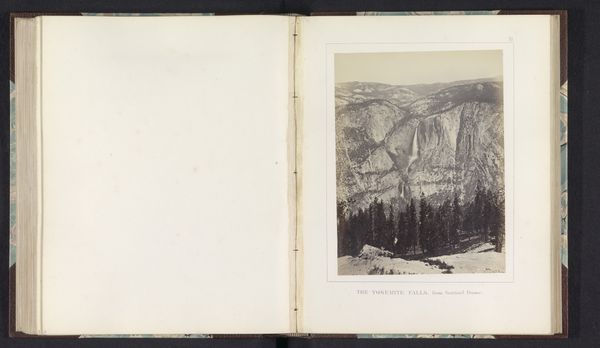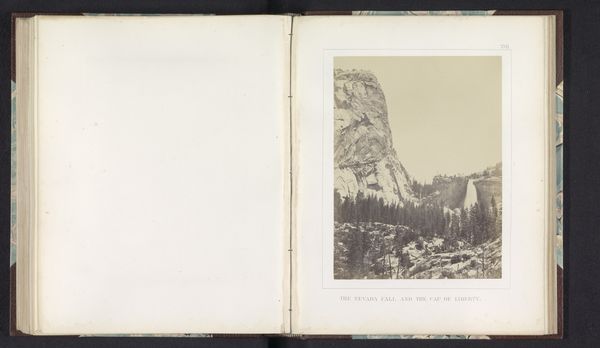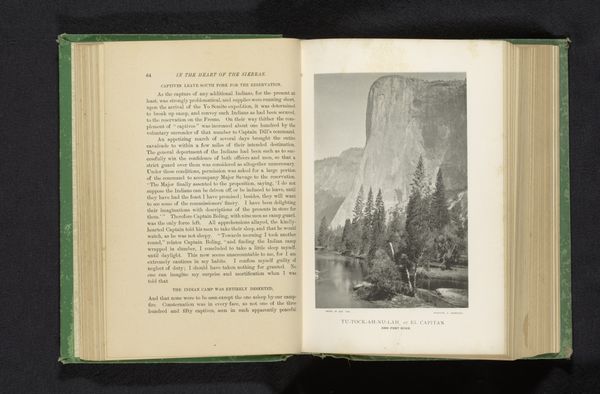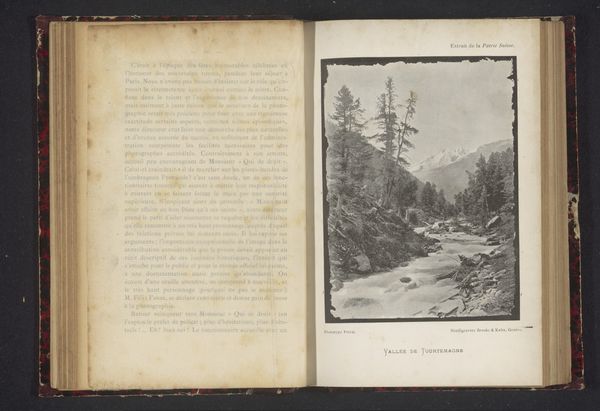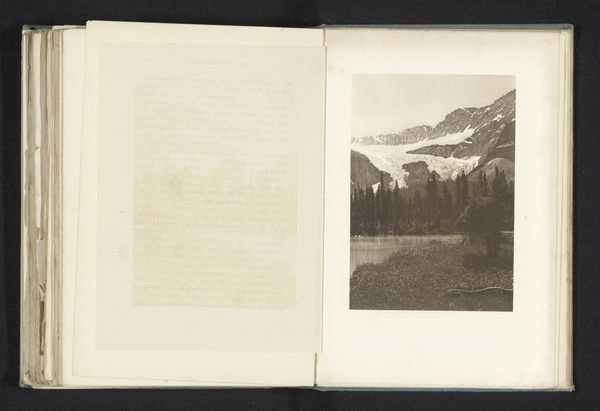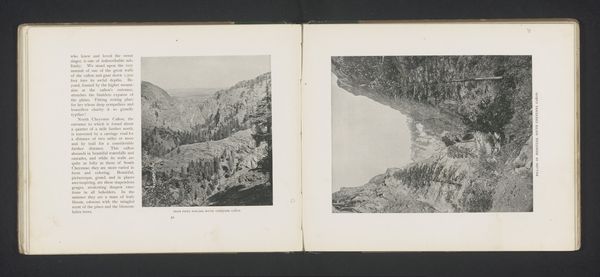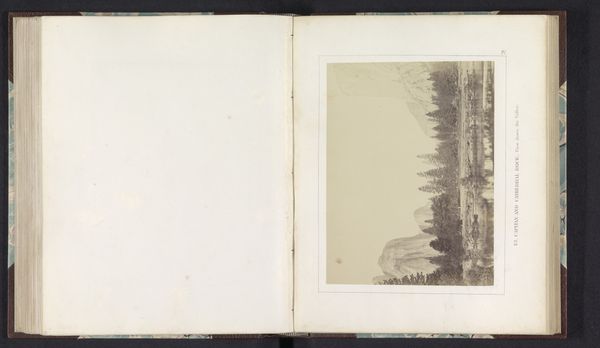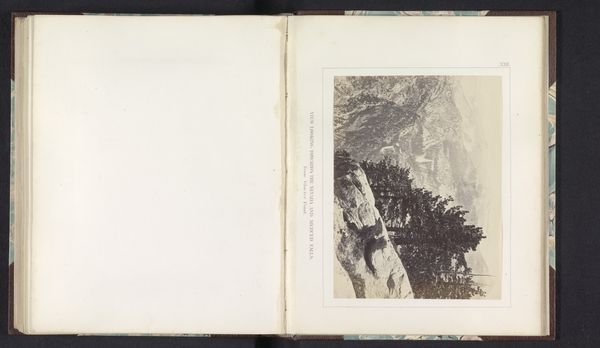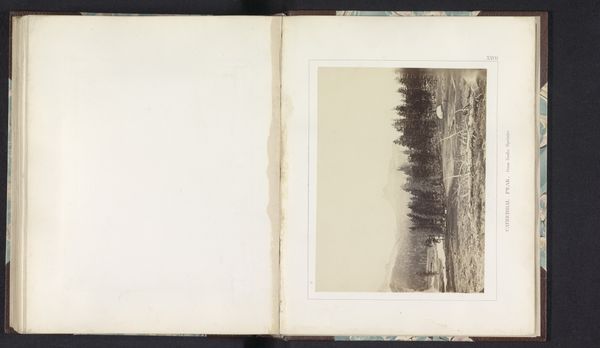
photography, albumen-print
#
landscape
#
photography
#
coloured pencil
#
hudson-river-school
#
watercolor
#
albumen-print
Dimensions: height 207 mm, width 155 mm
Copyright: Rijks Museum: Open Domain
Curator: Here we have Carleton Watkins' albumen print, "Gezicht op El Capitan in de Yosemite Valley," dating to before 1868. It's part of an album, presented on the right-hand page, beautifully preserved. What strikes you about it? Editor: Its scale, even in reproduction. The monumentality of El Capitan looms, doesn’t it? The interplay of light and shadow is intense; you feel the sheer mass of the rock against the delicate reflection in what I assume is the Merced River. It reminds me of early industrial photography, using this incredible landscape as a raw material study. Curator: Precisely. Watkins understood how to wield the aesthetics of the Hudson River School to both capture and subtly shape perceptions of the American West. The placement of the trees creates a clear line, almost a barricade in front of the impressive rock formation, giving rise to the implicit notion that humanity can alter nature through physical and symbolic production, especially as he became known as one of the key photographers hired to record mining activities that drastically changed that very valley's resources and economy. Editor: Watkins’ technique is intriguing here. Consider the labour, the logistics, behind producing albumen prints of this scale in a remote location. The process involves coating paper with egg white and then silver nitrate, creating a surface sensitive to light. Given the inherent instability of the materials, what impact must this image have had, being the first mass-reproducible documentation of a then unfamiliar geography? Curator: Indeed. Also important is understanding Watkins’ positionality. As a white American photographer capturing Indigenous lands, his work contributes to the narrative of westward expansion and Manifest Destiny. He's framing the West through a lens that legitimizes appropriation of indigenous space by those claiming imminent and divine entitlement. Editor: I wonder, too, about the audience for these images. These albumen prints weren’t cheap; their availability signaled something about economic class, even colonial aspirations tied to both consuming images of an alien geography and being reminded of the means of both resource acquisition and preservation, since the rise of landscape painting had been connected with environmentalist discourse for quite some time at that point in American history. Curator: So well stated. This one photograph, though beautiful on the surface, allows for an intricate intersectional understanding of gender, race, and the political history that birthed it. Editor: And it serves as a compelling reminder that the processes involved, like albumen printing, involve complex chemical and labor-intensive productions that directly connect aesthetics with access, industrialisation, and historical power dynamics.
Comments
No comments
Be the first to comment and join the conversation on the ultimate creative platform.
